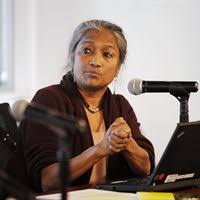In a nutshell
Cultural norms and practices relating to gender are far more restrictive in MENA and South Asia than elsewhere, but they are reinforced by a greater degree of legal discrimination than is found elsewhere.
Gender-transformative policies might be difficult to adopt or implement in these regions in the short run, given the apparent resilience of the barriers in place.
But progress could be made through more pragmatic, incremental approaches that entail some degree of accommodation with patriarchal constraints but also open up possibilities that have not been available before.
The International Labour Organisation (ILO) reported on global trends in women’s employment in 2004: ‘One of the most striking phenomena of recent times has been the increasing proportion of women in the labour force, enabling women in many regions to use their potential in the labour market and to achieve economic independence’.
Although women continue to have lower rates of labour force participation than men in much of the world, there has been a reduction in the gender gap in participation rates. Various factors have played a role in this: declining fertility rates; rising rates of female education and aspirations; new opportunities for work represented by the rise of labour-intensive export manufacturing and services; and so on.
The pace of increase has slowed down, and even reversed, in a number of regions but a striking feature throughout this period has been the low rates of female labour force participation in the geographically contiguous regions of South Asia and the Middle East and North Africa (MENA).
Male labour force participation rates in the two regions are not different from other regions of the world, but female participation rates have remained intransigently low. This is despite the fact that these regions have also experienced fertility decline and rising levels of female education, both considered conducive to women’s entry into paid work.
What explains this striking regional feature?
There have been various attempts to explain this striking regional feature. Many of these focus on their distinct cultural features, in particular, the organisation of family and kinship relations, characterising them as ‘the belt of classic patriarchy’. They have found that, despite differences in religious practices, economic structures and political regimes, these regions shared a great deal in common – the practice of female seclusion, patrilineal inheritance, patriarchal family norms, patrilocal marriage patterns and, till recently, strong son preference and discrimination against daughters.
Workshop with scholars explored the barriers, challenges and policy opportunities
At a time when policy-makers in different parts of the world have become increasingly interested in promoting women’s engagement with the labour market, given evidence that it contributes to inclusive growth and the economy of wellbeing, the persisting barriers in these regions pose a challenge.
In an attempt to address the barriers, challenges and policy opportunities that characterise the market for female labour in the MENA and South Asia regions, the Department for International Development and the Middle East Centre at the London School of Economics (LSE) collaborated with Ashoka University, India and the Economic Research Forum, Egypt to convene a workshop with scholars who have a long track record of research and policy engagement on these issues in the two regions.
The aim was to take stock of what we know about the barriers to women’s engagement with the labour market, to share our collective insights into policies and programmes that have been effective and to consider what this tells us about future efforts. The findings from this event are now available as a synthesis report.
Key points and responses emerging in discussions
Among the important points that emerged from these discussions was the fact that not only were cultural norms and practices relating to gender far more restrictive in these regions than elsewhere, but they were reinforced by a greater degree of legal discrimination than found elsewhere.
However, along with what the two regions had in common, participants identified some important differences between them, reflecting both the way that cultural norms were interpreted but also the differences in the kinds of jobs available within and across the regions.
The kinds of work that women sought to do had to take account of the gender-specific demands for labour expressed by employers, the role of the state in supporting or curtailing their opportunities as well as the structure of the local and national economy. There was, in other words, a political economy as well as a cultural dimension to the gendered patterns of labour market participation found in the two regions.
In terms of policy responses, participants generally agreed that gender-transformative policies might be difficult to adopt or implement in the short run, given the apparent resilience of the barriers in place. However, they believed that progress could be made through more pragmatic, incremental approaches that entailed some degree of accommodation with patriarchal constraints but also opened up possibilities that had not been available before.
These varied from larger scale interventions, such as investment in the care economy as a means of creating jobs for women but also enabling others to take up work; the design of infrastructure to promote women’s mobility and safety; legislation that recognised women in agriculture as workers entitled to social protection; organisational efforts to combine livelihood and union activities to improve the ‘quality’ of work; experiments with location and hours of work to attract women who had not worked outside the home before; working with school boys and girls to change gender stereotypes and the use of new technologies to promote women’s entrepreneurship.
This column was originally posted at The Impact Initiative.


